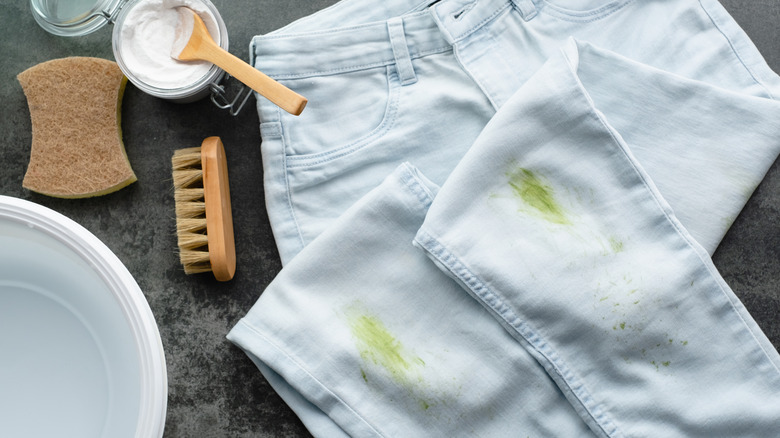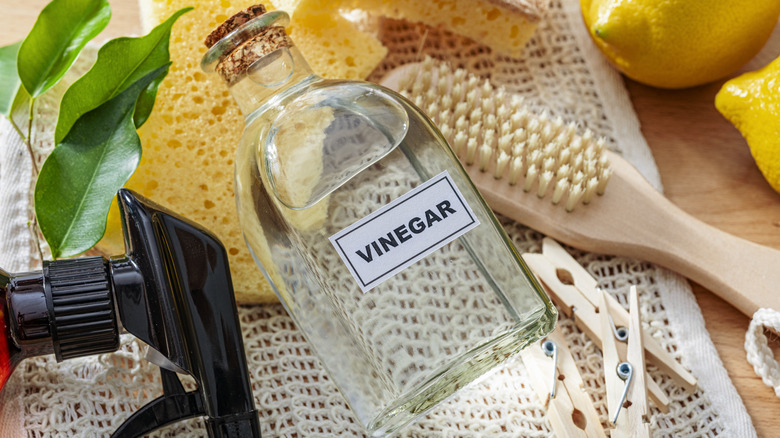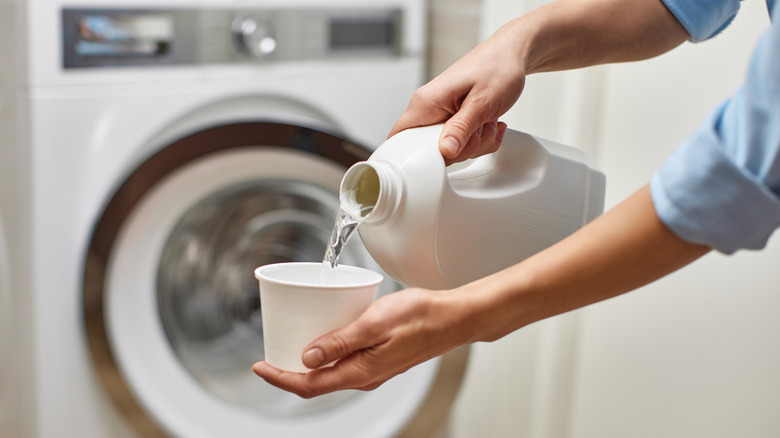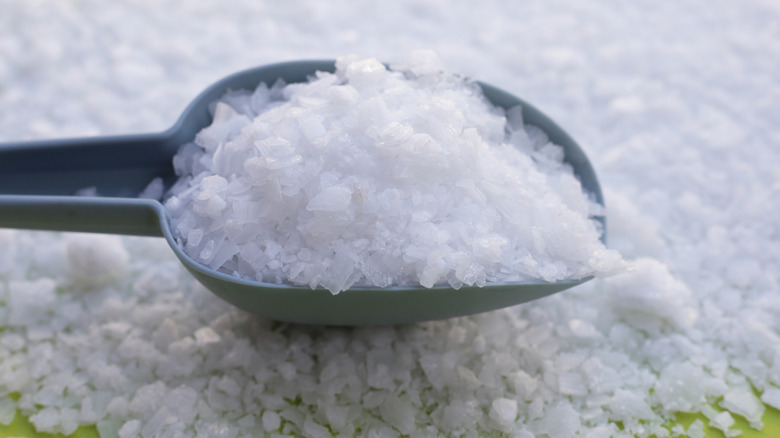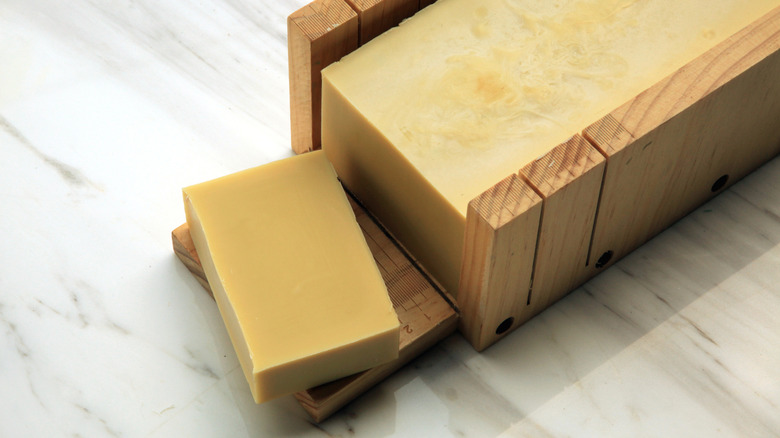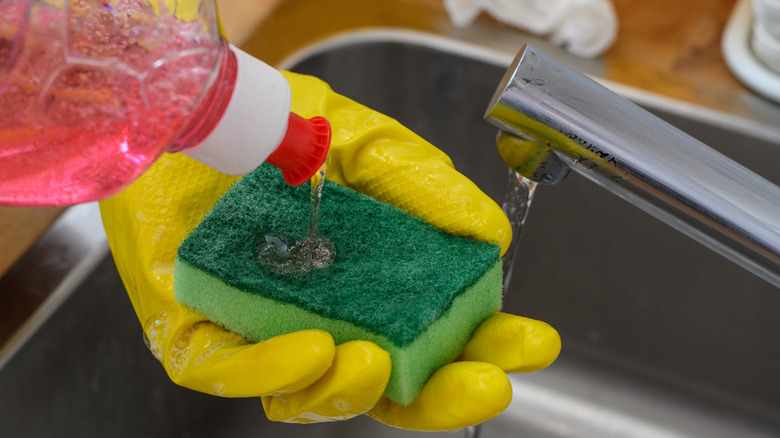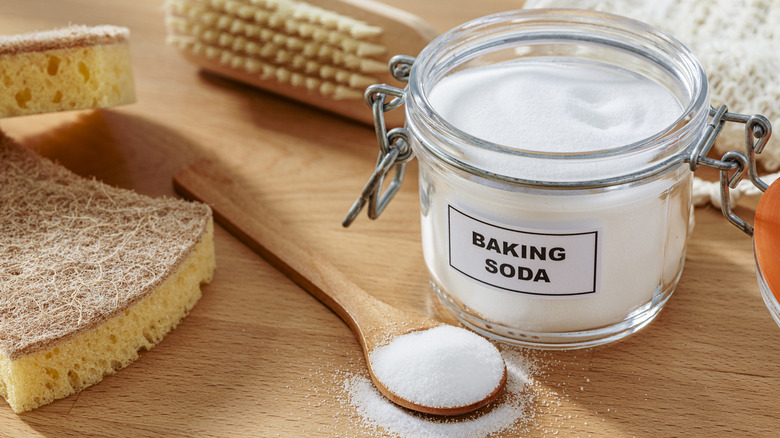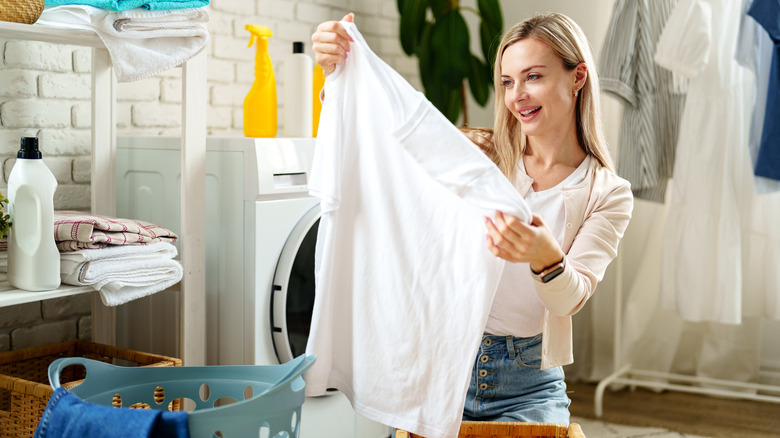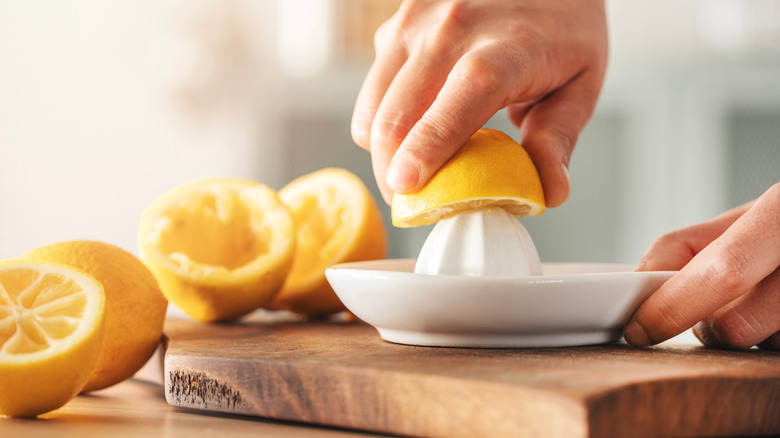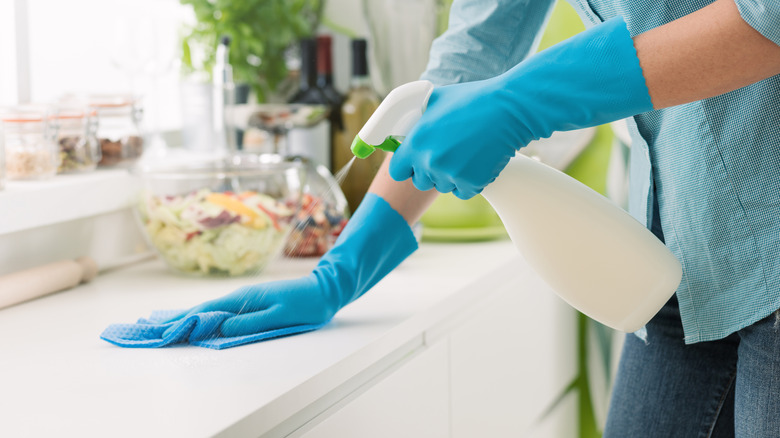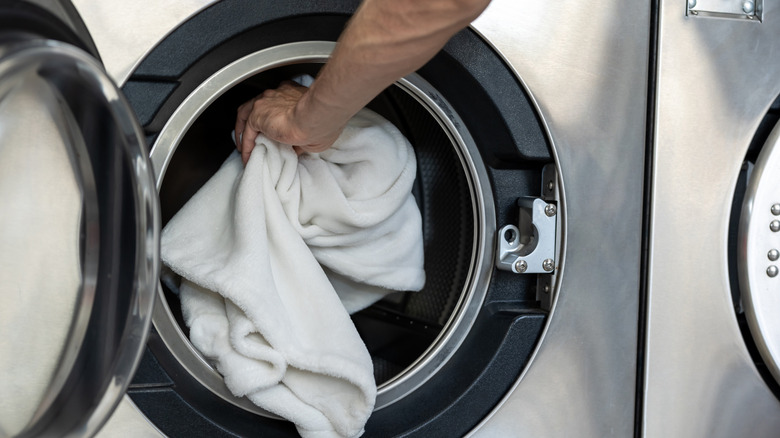4 Common Cleaning Products You Should Never Mix With Hydrogen Peroxide (& 6 That Are Safe)
Hydrogen peroxide is a great disinfectant for your home that tackles a variety of harmful microbes, including viruses, bacteria, and fungi, and can also get rid of some stubborn stains. While this common household antiseptic is simply water with an additional hydrogen molecule, hydrogen peroxide mixed with certain cleaners can become dangerous. In some cases, the combination of cleaning products may just make them less effective at removing dirt and germs from your home; however, some household chemicals should never be mixed together because they will have strong reactions that produce harmful gasses, acids, or other dangerous substances. Always check the labels of your products to know if they're safe to mix with each other and in what quantities.
Many times harmful mixtures of cleaners are accidentally created due to a lack of knowledge or mistakenly cleaning the same surface with two incompatible chemicals, so it's crucial to use caution when cleaning with any chemical products, even natural options. If you're in doubt about whether one of your cleaning products can be mixed with hydrogen peroxide, the safest option is to use only one of them. Before creating your own cleaning solutions with hydrogen peroxide, double-check that your combination will be safe.
Vinegar and hydrogen peroxide form a dangerous acid
While these two products are both natural cleaners that are commonly used in homes, mixing hydrogen peroxide and vinegar while cleaning is a big mistake. Vinegar is an effective cleaner and mild disinfectant because of the acetic acid it contains and when this acid mixes with hydrogen peroxide, it chemically reacts to form peroxyacetic or peracetic acid. Both peracetic and peroxyacetic acid are extremely corrosive, dangerous substances that can burn your skin, eyes, and lungs.
Exposure to just a small amount of peracetic acid for as little as three minutes can cause corrosion to your mucous membranes, respiratory system, and eyes, according to the National Research Council Committee on Acute Exposure Guideline Levels. Though sometimes this physical irritation will be mild, exposure to this acid can also end up being serious. In larger concentrations, peracetic acid can prove fatal. This is why it's crucial to never allow these cleaners to mix. Instead, you can disinfect your home with just hydrogen peroxide or vinegar, but separately.
Mixing hydrogen peroxide with bleach is explosive
Bleach has reactions with a variety of cleaning products, such as ammonia, rubbing alcohol, and vinegar, which produce toxic gasses. Hydrogen peroxide is no exception to this and will also react poorly with bleach. Generally, bleach will form chlorine gas, which is damaging to lungs, when it comes into contact with an acid. Though hydrogen peroxide is slightly acidic, the combination of this disinfectant with bleach has other harmful effects. When bleach is mixed with peroxide, it aggressively makes oxygen gas. This might sound harmless, but the formation of the oxygen is so intense that it could cause an explosion.
Because of how quickly and vigorously the oxygen gas is produced, adding hydrogen peroxide to bleach is extremely dangerous. As a rule of thumb, bleach should only be diluted with water and never mixed with other cleaning products. While bleach and hydrogen peroxide are both fantastic, useful disinfectants for killing bacteria and germs, it's vital to only use them separately.
Lye and hydrogen peroxide combined might get too hot
Both hydrogen peroxide and lye are used for laundry and fabrics, but mixing them together could become too hot to handle. Lye, which is sodium hydroxide, is a corrosive, caustic substance and a very strong base. When extremely alkaline materials such as lye come into contact with hydrogen peroxide, there's an intense reaction that gives off a lot of oxygen and heat. In certain conditions, this chemical reaction could explode.
Rather than combining the dangerous mixture of hydrogen peroxide and lye to try to brighten and freshen your clothing, each one is powerful enough to work well on its own. To remove stains from fabrics with hydrogen peroxide, simply add a few drops over the stain, though you may want to patch test it first, as peroxide can have a lightening effect. Lye functions best to wash your clothes rather than remove stains, and it's great for eliminating grease and grime. By mixing lye with distilled water and coconut oil, you can create your own DIY laundry soap, though you'll have to use caution and wear gloves while working with lye.
Castile soap can reduce the anti-bacterial action of hydrogen peroxide
Castile soap is a great, natural cleaner for washing away dirt and grease, but it doesn't do much to kill germs, which might make you think that adding a little hydrogen peroxide would turn it into a more effective cleaner and help to rid your home of bacteria. Unfortunately, this isn't the case. Concentrations of hydrogen peroxide 30% or more will give off oxygen, which could be an explosion risk if the cleaners are being stored, especially near a source of heat. Though typical household peroxide is too weak to release enough oxygen to be risky, the basic pH of castile soap makes hydrogen peroxide break down into water and oxygen faster. Rather than the peroxide maintaining it's chemical composure and fighting germs, you'll really just be cleaning with soap and water, leaving your homes with more germs than you think.
Once the hydrogen peroxide has decomposed completely, it won't be effective as a disinfectant anymore, rendering it essentially useless in your cleaning solution. Though this combination is often suggested as a carpet cleaner that can tackle dirt and stains simultaneously, it's not going to be helpful if you're trying to disinfect and kill germs. Instead, you can use plain 3% hydrogen peroxide to ensure that viruses, bacteria, and germs are banished from your space.
Use a solution of dish soap and hydrogen peroxide to fight stains
Dish soap and hydrogen peroxide are a great combo. Not only are these two products safe to mix together, but they also make a great stain fighter for fabrics. While hydrogen peroxide will begin to break down when mixed with dish soap, the oxygen gas it releases gets stuck in the sudsy water. This generates even more bubbles than dish soap alone, which can help to lift stains.However, this combo isn't an effective disinfectant because the peroxide is decomposing.
The foamy, bubbly action of this solution is the reason some cleaners suggest mixing hydrogen peroxide and dish soap. Since dish soap is a solvent that can help to remove stains and hydrogen peroxide can be used to bleach stains (and the two, together, create a reaction that can oxidize stains), these two products will keep your laundry looking its best. Mix two parts dish soap with one part peroxide and apply to your fabrics. Alternatively, for a little more of hydrogen peroxide's lightening power, combine two parts peroxide with one part dish soap in a spray bottle and spritz onto frustrating stains. Because decomposing hydrogen peroxide releases oxygen gas this mix should never be stored, especially in a sealed container, as it could explode from the gas building up.
Baking soda and hydrogen peroxide can make a powerful solution or paste
Baking soda, or sodium bicarbonate, is a mild abrasive that's great for cleaning, and when combined with hydrogen peroxide it can make a fantastic solution or paste that'll ensure your home is sparkling. In fact, mixtures of hydrogen peroxide and sodium bicarbonate are sometimes used for professional teeth whitening, and they can remove stains from your home, too. Though baking soda is somewhat basic, when combined with regular 3% peroxide it creates an alkaline hydrogen peroxide solution. The stain-busting properties of the peroxide remain, making this an effective cleaning combo.
This dynamic duo will help you easily tackle tough stains on various surfaces in no time, and there are numerous ways to clean with baking soda and hydrogen peroxide. Try adding a little hydrogen peroxide to a few tablespoons of baking soda to make a stain-fighting paste. If you have a really stubborn stain on your carpet, allow this paste to set on it for approximately 10 minutes to lighten it. Don't store this mixture, as off-gassing can create a dangerous pressure buildup. Instead, make it fresh each time you use it. Avoid using it on delicate surfaces like stone or aluminum, as these can be damaged by the chemicals.
Use peroxide with your laundry detergent for clean, bright clothes
Hydrogen peroxide is often used as a substitute for bleach because it's safe for all fabrics, though you need to spot test dyed items, and due to its lightening qualities. In fact, non-chlorine or oxygen bleach products frequently contain hydrogen peroxide as the bleaching agent. Just like how you'd use non-chlorine bleach in tandem with your laundry detergent to get bright whites or eliminate stains, you can do so with hydrogen peroxide.
To use hydrogen peroxide for laundry, you can spot treat tough stains before throwing them into the washing machine by adding a little of the cleaner onto the fabric and letting it set for several minutes. If you're concerned about the hydrogen peroxide getting onto other items or if you want to check that the stain is gone before washing, rinse the fabric after applying the peroxide. Alternatively, try pouring a cup of hydrogen peroxide into your washer when running a load of whites with your regular detergent to leave them super clean and brighten your whites without using bleach.
Lemon juice and hydrogen peroxide are a dream team for whitening
Lemon juice is commonly used in cleaning because it has some antibacterial properties and is capable of tackling grease and stains, but combining it with hydrogen peroxide can actually make an ultra-powerful (yet safe) bleach. Just make sure to use caution or avoid cleaning surfaces that are sensitive to acid, such as natural stone, as hydrogen peroxide and lemon juice could be too strong.
To make a stain-fighting solution for your laundry or a lightening alternative to bleach, combine lemon juice and hydrogen peroxide. Now, you can use your cleaning solution to pre-treat stains directly and brighten clothes while they're in the wash, like you would with bleach. To use lemon and hydrogen peroxide as an all-purpose cleaner around your home, mix a cup of hydrogen peroxide with 2 cups of water and ¼ cup of lemon juice.
Dilute hydrogen peroxide in water for a simple cleaner or disinfectant
Though combining hydrogen peroxide with certain cleaning products can sometimes be helpful, using it on its own with just a bit of water can make for a fantastic cleanser for various tasks or an effective disinfectant. While 3% hydrogen peroxide is already fairly diluted and can be used to disinfect surfaces on its own, higher concentrations, such as food grade hydrogen-peroxide, need to be mixed with water to make a disinfectant. Be mindful that high concentrations of hydrogen peroxide, such as the 35% food grade solution, may be too strong for household cleaning and should be handled with caution.
For a multipurpose cleaner with some anti-bacterial action, combine equal parts of water and hydrogen peroxide in a spray bottle. This solution can help you to clean your bathroom, wash mirrors, wipe down your counters, and clean various other surfaces. While further diluted hydrogen peroxide should kill some bacteria, this solution will be weaker as a disinfectant than only 3% hydrogen peroxide. To allow the peroxide time to kill bacteria, let your disinfectant sit on surfaces for approximately five minutes.
Borax and hydrogen peroxide will help with your laundry
Both borax and hydrogen peroxide are super cleaners when it comes to laundry, and there shouldn't be any risks in combining them. In industrial settings, hydrogen peroxide can be mixed with sodium borate, otherwise known as borax, to create sodium perborate, an ingredient in commercial laundry detergents and cleansers. Together, borax and hydrogen peroxide make for a safe and effective cleaner that'll be tough on stains. These two common household cleaners are sometimes recommended for making your own laundry detergent, and would do a fantastic job of helping your clothes get clean and fresh.
Borax is used in laundry to help wash away dirt and grime, while hydrogen peroxide lifts stains. When combined, the hydrogen peroxide and borax are a powerful stain-fighting cleaner. To make an effective DIY laundry detergent with borax and hydrogen peroxide, you'll also need baking soda and a little bit of soap. By dissolving these ingredients in hot water, you'll make your own liquid laundry detergent that busts stains. First, add 2 cups of both baking soda and borax to 8 cups of boiling water before adding about a cup of hydrogen peroxide. If you're worried the peroxide will lighten your clothes too much, you can further dilute it before adding it to your DIY detergent. Add another 8 cups of boiling water and 2 cups of your soap to the solution and leave it to cool before starting your next load of laundry.
